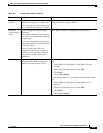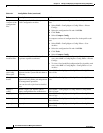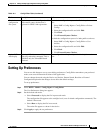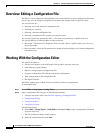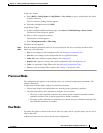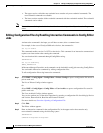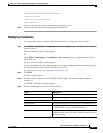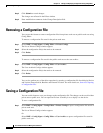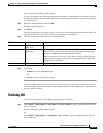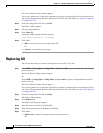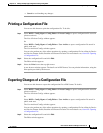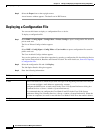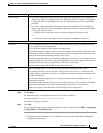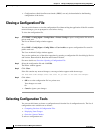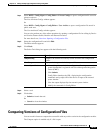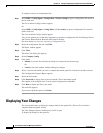
10-13
User Guide for Resource Manager Essentials 4.1
OL-11714-01
Chapter 10 Editing and Deploying Configurations Using Config Editor
Undoing All
The User Archived Configs window appears.
You can also perform any of the editor operations by opening a configuration file for editing by Device
and Version, Pattern Search, Baseline and External Location. For more details see,
Overview: Opening
a Configuration File.
Step 2 Select the configuration file and click Edit.
The Editor window appears.
Step 3 Click Save.
The Save Config dialog box appears, only if you are saving the configuration file for the first time. The
subsequent saving of a file is done directly to its previously saved location.
Step 4 Enter the information required to save a configuration file.
Step 5 Click either:
• Submit to save the configuration file.
Or
• Cancel to return to the previous setting.
After the configuration file opened from Device Archive is saved to the private or public (user archive),
all the subsequent operations (compare, show changes) behave as if the configuration is opened from a
private or public location.
Undoing All
You can use this feature to undo editing or typing changes. To do this:
Step 1 Select RME > Config Mgmt > Config Editor > Private Configs to open a configuration file stored in
private work area.
The List of Private Configs window appears.
Or
Select RME > Config Mgmt > Config Editor > User Archive to open a configuration file stored in
public work area.
Field Description Usage Notes
Public
Saves the files in the
public area.
None.
Private
Saves the files in the
private area.
When a configuration from list of private config is opened and saved in the
public area (user archive) with the same name as the private configuration,
the private configuration with that name gets deleted.
However, the reverse is not true. That is when a config is opened from the
public area (user archive) location and saved in the private area, the public
configuration is not deleted.
Branch Name Name of branch. Private area for you where configuration files are stored locally.



